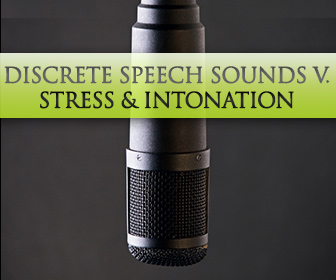Which is More Important? Discrete Speech Sounds v. Stress and Intonation


It probably seems at first glance that this is a conversation between two students in the hall or cafeteria. Actually, however, it was between two teachers in the staff room. Testing can be as stressful for teachers as for students: difficult to plan for, put materials together for, schedule time for, as well as give an appropriate amount of credit for. Particularly hard on everyone is the big unit exam or midterm that covers a large chunk of course material and poses a number of instructional dilemmas: for example, the student who is doing well in class but fails the test miserably, or the student who does well on all parts of the test but one heavily weighted portion. And then there are the students who just don’t show the day of the test, claiming “family emergency.” Finally, there is the stress that is generated in both students and teacher to have so much of the grade based on the one test. How, really, with such a test does the teacher fairly represent the students’ work? The answer may lie in the type of test. Informal assessment rather than the “big test” seems to address a lot of these issues. It’s assessment”by walking around,” to borrow a term from business. Just as in a well-run business the manager does not hide in his office but actively gets out and sees what is happening with his staff and product, so should the teacher not just hide behind his desk but rather get up and actively engage with students and check in on how they are progressing. The question is how to use that habit for assessment.

One of the best ways to informally assess ESL students is to simply walk around. Stand back and note the conversations students are having: What pronunciation and oral grammar issues need to be addressed in the future? Are they engaging with each other appropriately, such as taking turns and actively listening? Make a few notes about instructional issues that should be addressed in upcoming classes. The teacher can learn a lot about students just by walking around and listening.
To get a clearer, more detailed of student ability than the “snapshot” provided by walking around, the teacher can also choose to sit in on one or more groups by pulling up a chair and joining it—not to become an active member, necessarily, but to get a more in depth look at how students are relating to each other. This works especially well for discussions on important issues such as the death penalty. By sitting in on a group, the teacher can get a clearer idea of how well students are supporting their own ideas, listening to other’s ideas, and respectfully disagreeing with each other when appropriate. The teacher can also note those students who are “hiding out” and not really participating, which might not be as apparent when just walking around.
Having informal conversations with students can also give you quite a bit of information on your student. I remember reading a novel in which the main character, a doctoral student, ran into his advisor in the elevator, where between floors the advisor asked him a few questions about his dissertation. When they got to their floor, the advisor congratulated the student, who then realized that he had just successfully defended his dissertation. While I would not recommend going that far with informal assessment, I think the anecdote shows the power of this kind of assessment—the student was able to reveal a lot more about what he knew in the “low stakes” atmosphere of a private and impromptu conversation than in a meeting in front of a committee. Similarly, a student can better reveal his competency in casual conversation in English in an actual casual conversation than he would by standing in front of the class.
Partner and group work also reveals a lot about student learning in ESL: language and learning both occur in communities, so this is not surprising. Again, sometimes, perhaps at break or between activities, just watch students as they interact with their peers and note areas for pronunciation, conversation, and vocabulary instruction. This also helpful for writing instruction. One of my proudest teaching experiences was watching the class that entered frightened of or openly hostile to the writing process as well as suspicious of each other go from silent “notes to myself” writers to a community that actively sought and gave each other feedback on their writing. This was accomplished in part by watching them in the writing process then giving feedback on what could improve and modeling those behaviors. Such a transformation, however, probably would not have occurred without carefully observing and analyzing the class behaviors in the writing process.
As shown in the example above, informal assessment is not just for oral skills; it can be used for written ones. It’s helpful just to observe what students do when they write as so many of them hate it. Many students, for example, get themselves into very strange positions, literally, when writing—half lying on the desk, for example, and looking at the paper from a prone position. Talking to students about alternative positions, as well as the possibility of using a computer, can help here. Other students may hate writing because it seems so repetitive and dull to them—“My Summer Vacation” over and over. Informal assessment can help get to the source of problems like these and allow the teacher to adjust the curriculum.
Mostly, however, this kind of assessment is to inform the teacher of what areas to emphasize for materials and instruction and therefore is arguably as valuable or more so that the traditional “big test.”
Do you see value in alternate assessment? What are some activities you might use?